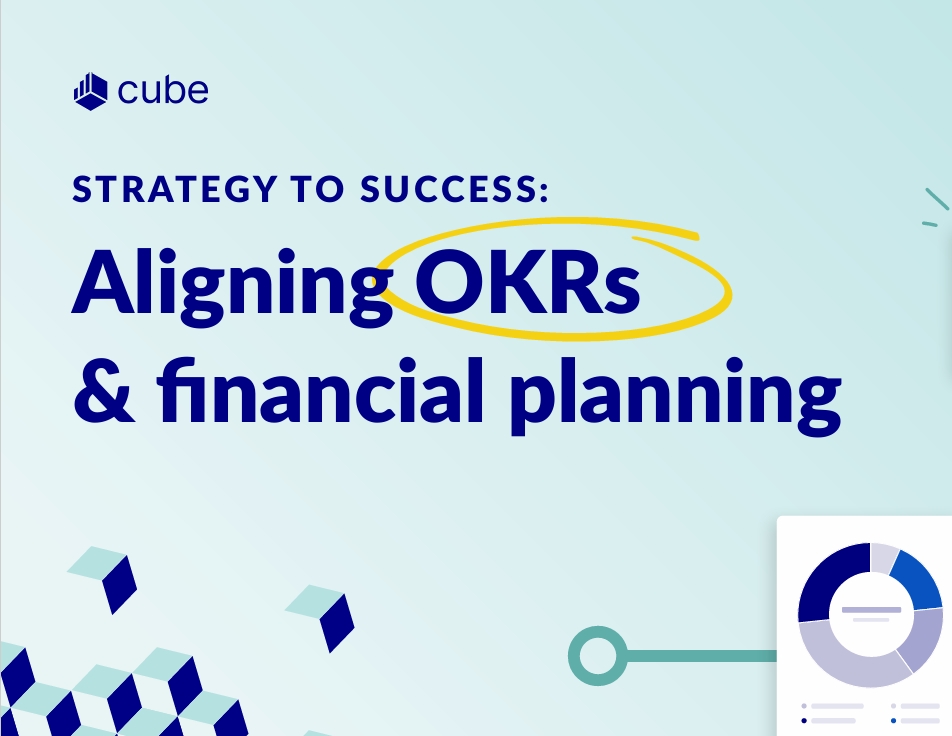In today’s fast-paced business environment, finance leaders face unprecedented challenges—market volatility, shifting priorities, and the constant pressure to deliver measurable results. Traditional financial planning, often rigid and backward-looking, struggles to keep up. Enter Objectives and Key Results (OKRs), a dynamic framework that bridges strategic vision with financial execution.
Originally pioneered by Intel and popularized by Google, OKRs have become a cornerstone of high-performance organizations. But how can finance teams leverage OKRs to enhance decision-making, optimize resources, and drive profitability?
In this NeoForm blog post we explore the power of aligning OKRs with financial planning, offering actionable insights, real-world examples, and a step-by-step approach to implementation.
Inspired by an appreciated practical e-book by Cube planning software.
Why Traditional Financial Planning Falls Short
Before diving into OKRs, it’s essential to understand the limitations of conventional financial planning:
- Resource Misallocation – Without clear objectives, budgets and manpower may be misdirected.
- Communication Breakdowns – Siloed departments lead to conflicting priorities.
- Reactive Management – Static plans force leaders into constant firefighting.
- Inaccurate Forecasts – Rigid models fail to adapt to real-time market shifts.
- Low Stakeholder Buy-In – Ambiguous goals result in weak executive support.
The solution? A dynamic, OKR-driven financial strategy and planning.
What Are OKRs?
OKRs (Objectives and Key Results) are a goal-setting framework that ensures alignment, focus, and measurable outcomes.
- Objectives (O): Qualitative, inspirational goals (e.g., “Improve cash flow management”).
- Key Results (KR): Quantitative metrics tracking progress (e.g., “Increase cash reserves by 20% in Q4”).

Example Finance OKRs
| Objective | Key Results |
|---|---|
| Enhance financial reporting efficiency | Reduce monthly book closing from 10 days to 5. Implement automated reporting software. |
| Optimize cost management | Eliminate 3 inefficient processes in Q3. Reduce operational expenses by 15%. |
The OKR-Financial Planning Alignment Process
1. Setting Meaningful Finance OKRs
OKRs must be:
- Focused (3-5 objectives max).
- Aligned (tied to company strategy).
- Transparent (shared across teams).
Example: A B2B SaaS company sets:
- Objective: Boost recurring revenue.
- Key Results:
- Increase MRR by 15%.
- Reduce churn by 2%.
- Grow enterprise ACV by 10%.
2. Breaking Down Strategy into Tactical OKRs
Each strategic goal should translate into actionable financial metrics:
- Strategic Objective: “Become a leader in sustainable tech.”
- Financial KR: “Increase R&D investment in green tech by 30%.”
3. Linking OKRs to Financial KPIs
Assign quantifiable financial metrics to each KR:
- Instead of “Invest in sales training,” specify “Allocate $50K to sales enablement.”
4. Cross-Department Collaboration
Finance OKRs must align with other teams:
- Marketing: “Launch 2 sustainability campaigns ($20K budget each).”
- Sales: “Train 5 reps on green tech solutions ($70K salary each).”
5. Developing a Financial Blueprint
Integrate OKRs into budgeting, forecasting, and cash flow management:
- Prioritize high-impact OKRs in budget allocation.
- Use FP&A software for real-time tracking (e.g., Cube).
Execution & Measurement: Turning OKRs into Results
1. Translating OKRs into Daily Metrics
- Break down “Increase sales by 20%” into:
- Market research ($50K budget).
- Influencer partnerships ($10K spend).
- Campaign execution ($20K per campaign).
2. Monitoring Progress
- Use FP&A software for:
- Real-time dashboards.
- Automated reporting.
- Scenario modeling.
3. Overcoming Common Challenges
- Shifting priorities? Reassess OKRs quarterly.
- Resource constraints? Prioritize high-ROI initiatives.
- Stakeholder misalignment? Use data visualization to clarify goals.


Feedback Loops: Fine-Tuning Financial Strategies
OKRs are a continuous cycle, not a one-time exercise.
1. Retrospective Analysis
- Compare actuals vs. targets (e.g., “Why did sales grow by 10% instead of 15%?”).
- Gather cross-functional feedback.
2. Adjusting Future OKRs
- If “Reduce churn by 2%” was missed, investigate:
- Customer service gaps?
- Product issues?
- Pricing misalignment?
3. Building a Feedback Culture
- Monthly financial reviews.
- Stakeholder check-ins.
- Real-time FP&A analytics.
Conclusion: Transform FP&A with OKRs
Aligning OKRs with financial planning isn’t just about setting goals—it’s about creating a culture of agility, accountability, and data-driven decision-making.
Key Takeaways:
✅ Set clear, measurable OKRs tied to financial KPIs.
✅ Break down strategy into tactical, budgeted actions.
✅ Leverage FP&A tools (like Cube) for real-time tracking.
✅ Continuously refine through feedback loops.
Ready to revolutionize your financial strategy? Start integrating OKRs today.
🔗 Links for More:
Download and read the e-book on Cube website or from NeoForm LinkedIn page.
📌 About NeoForm Partners:
NeoForm Partners helps businesses optimize financial strategy and planning through cutting-edge frameworks like OKRs. Visit our blog for more insights.
Ready to align business strategy with your financial planning? Contact us to take your strategy, planning and execution to the next level.

1 Comment
Mastering Operating Budgets for FP&A Leaders - NeoForm Business Partners
[…] Aligning OKRs with Financial Planning: A Strategic Blueprint for Success […]
Comments are closed.